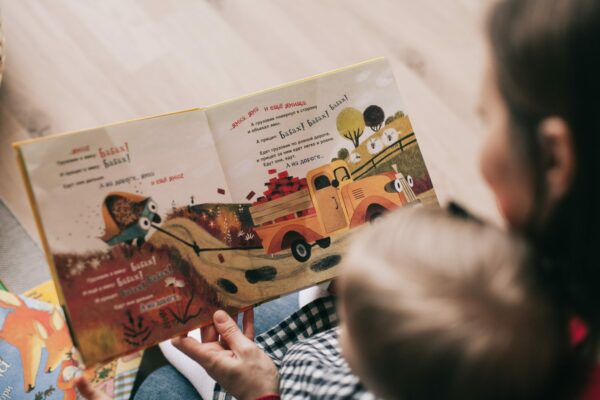Love, our universal language transcending time and age. As parents, it is our duty to ensure that our children feel loved and valued. You might feel that you are giving them the world, but your child might not feel loved.
“The 5 Love Languages of Children” is one of Gary Chapman’s bestselling books. Instead of blindly giving love your way, he explores the concept of love languages and how understanding them can strengthen relationships with your child.
More about the 5 Love Languages at Wikipedia.
The 5 Love Languages
So, what are the love languages? They are Physical Touch, Words of Affirmation, Receiving Gifts, Quality Time, and Acts of Service.
Each of these methods of expressing love resonates differently with different people. For instance, some children may be more receptive to hearing kind and encouraging words, while others might feel most cherished when their parents spend time with them. By speaking your child’s love language, you are speaking directly to their heart and making them feel valued and appreciated.
In essence, the 5 love languages can be thought of as a love communication system. Just like how we have different ways of communicating, we also have different ways of expressing and receiving love.
It’s important to note that children may express and receive love in multiple ways, but there is usually one love language that stands out as their primary.

www.pexels.com
Applying Love Languages to Children
How To Identify Your Child’s Love Language?
A great starting point is to observe their behavior and reactions. Pay attention to how your child expresses love. Do they often give hugs and physical affection? Are they craving quality time with you? Do they frequently give compliments or words of affirmation? Does your child enjoy giving and receiving gifts?
Observe how your child reacts to different expressions of love. Do they light up and feel loved when you spend quality time together? Do they seem particularly happy when receiving small gifts? Take note of their reactions to different love languages.
Listen to their preferences. Ask your child what makes them feel loved and how you can best show them love. They might have their own way of articulating their love language.
Practical tips for expressing love in each language
Physical Touch: Give hugs, kisses, and cuddles. Hold their hand, pat their back, or give a gentle squeeze. Physical touch can also include high-fives, playful tickling or wrestling.
Words of Affirmation: Offer your child encouragement and genuine praise. Use positive and uplifting words to express your love. Whether it’s a simple “I’m proud of you” or a heartfelt compliment, these words have the power to make your child feel appreciated and treasured. Leave sweet notes or send them loving messages.
Receiving Gifts: Give thoughtful and meaningful presents. It’s not about the cost, but the thought behind the gift. Look for small surprises that will make them feel special and loved.
Quality Time: Dedicate one-on-one time with your child. Engage in activities they enjoy and listen attentively to what they have to say. Create shared experiences and memories.
Acts of Service: Help them with tasks or chores that they find challenging. Do something kind for them, like making their bed, packing their lunch, or helping with their homework.

www.pexels.com
Benefits of Speaking the Right Love Language
Love for your child should be unconditional, and not as a reward when children behave well. Unconditional love ensures your child does not fall into issues of internal emotional struggles like bitterness, insecurity, anxiety, rage, and lack of confidence.
Research has shown that those children who receive appreciation and approval in their main love language have more elevated self-esteem and improved mental health.
Strengthened Parent-Child Bond
When a child feels loved and understood in their preferred love language, it deepens the connection between parent and child. This strengthens the bond, builds trust, and creates a safe and loving environment for the child to grow and thrive.
Improved Communication
Understanding a child’s love language can enhance communication between parent and child. By speaking in a way that resonates with the child, parents can effectively convey love and affection, making it easier for the child to express their needs and emotions.
Enhanced Understanding
Speaking the right love language allows parents to better understand their child’s emotional needs, desires, and struggles. This understanding can help parents provide appropriate support and guidance, leading to increased emotional well-being and overall development.
Resilience and Self-Worth
When children feel loved and valued in their preferred love language, it boosts their self-worth and resilience. They develop a strong sense of self and confidence, which allows them to navigate challenges and setbacks with greater resilience.
Increased Happiness and Satisfaction
When a child’s love language is consistently spoken by their parents, it fosters a sense of happiness and satisfaction in the child. Knowing that their needs are being met and that they are loved in a way that resonates with them brings joy and contentment.
When your child feels loved and understood, they are more likely to thrive and have positive relationships with others. By identifying and speaking your child’s love language, you are investing in their emotional development and nurturing a loving and supportive family environment.
Real-life examples of how parents have applied the love languages
Physical Touch: Eli’s parents noticed that she calmed down and felt more secure when they held her hand or gave her a hug. They made sure to incorporate physical touch into their daily routines by cuddling during story time, giving gentle touches during playtime, and even simply holding hands while walking together. This helped Eli feel loved and connected to her parents.
Words of Affirmation: Bryan’s parents realized that he thrived when he received words of encouragement and affirmation. They made it a point to praise his achievements, acknowledge his efforts, and express their love for him through kind and supportive words. This boosted Bryan’s self-esteem and made him feel valued and loved.
Quality Time: Emily enjoyed spending uninterrupted time with her parents. Her parents set aside dedicated time each day to engage in activities that Emily enjoyed, such as playing board games, taking walks, or having conversations about her day. These quality moments together made Emily feel seen, heard, and deeply loved.
Acts of Service: Evan’s parents discovered that he felt loved when they helped him with tasks and showed acts of kindness. They regularly offered to assist him with his homework, prepared his favorite meals, and participated in activities he enjoyed. These acts of service made Evan feel cared for and loved by his parents.

www.pexels.com
Adapting Love Languages at Different Stages
It is essential to remember that every child is unique, and their love language may vary as they grow and develop. What may have been their primary love language as a toddler may not be the same when they reach their teenage years. Remain aware of your child’s cues and be prepared to adjust your love language strategies accordingly.
Love Languages Can Change as Children Grow
Developmental changes: As children grow, their emotional needs and ability to communicate can evolve. Their love language may shift to align with their changing maturity and understanding.
Influences from the environment: The people and experiences in a child’s life can shape their preferences and attitudes. They may develop a new appreciation for a particular love language based on their surroundings.
Personal growth: Children go through various phases of self-discovery and exploration. This self-awareness can lead them to discover new aspects of themselves and what makes them feel loved.
Tips for adapting love languages to meet the changing needs of children
Observe and communicate: Pay attention to their emotional cues and how they respond to different expressions of love. Engage in open and honest conversations with your child to understand their changing needs.
Stay flexible: Be willing to adjust your approach based on what resonates with your child at different stages of their development. Be open to trying different love languages to see what makes them feel the most loved.
Create a safe space: Provide an environment where your child feels comfortable expressing their emotions and needs. Encourage open communication and validate their feelings to foster a strong and trusting relationship.
Show love in multiple ways: Even if your child has a primary love language, continue to express love in various ways to ensure they feel loved on multiple levels. This can help maintain a well-rounded approach to meeting their emotional needs.
Seek their input: Involve your child in conversations about love languages and ask for their input. They may have insights or preferences that can guide your efforts to adapt and meet their changing needs.

Understanding and applying the 5 Love Languages can be a game-changer when it comes to connecting with your child. By speaking their love language, you can make them feel truly seen and loved. This also has a profound impact on their emotional well-being, self-esteem, and overall happiness.
Foster stronger connections and build lasting bonds with your child today. It’s never too late to start incorporating love languages into your parenting style and watch the positive effects it has on your child’s well-being. Happy connecting!






One thought on “Understanding 5 Love Languages for Kids: Dr. Chapman’s Principles”